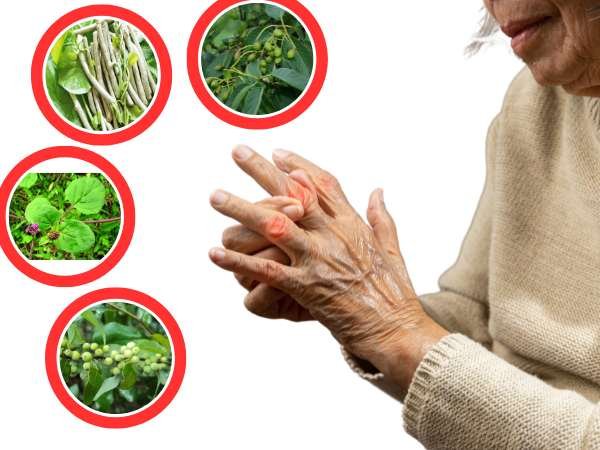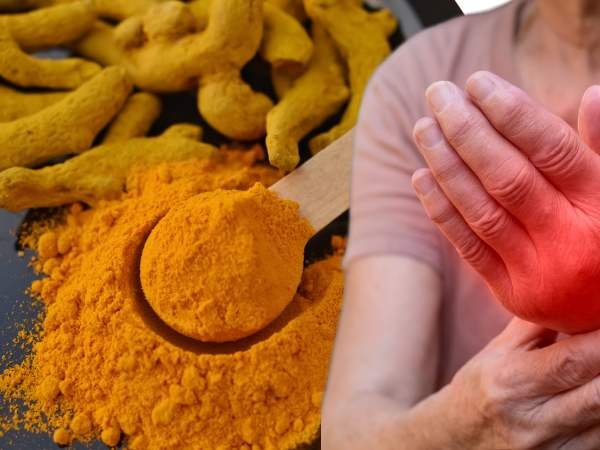Ayurveda Treatment of Gout and Uric Acid

Gout is a painful form of arthritis due to the abnormal level of uric acid present in the blood. There are natural modes of treatment about gout offered by Ayurveda, one of the Indian healing systems aged thousands of years, to reduce gout and acidity.
Gout is Vatarakta according to Ayurveda. It has described wherein the dosha of Vata and blood, Rakta dhatu, becomes imbalanced and leads to swelling and pain inside the joints. All the restoration and reordering can be achieved through diet, herbal remedies, and changes in lifestyle. Some herbs, like Guduchi (Tinospora cordifolia), Haritaki (Terminalia chebula), and Punarnava (Boerhavia diffusa), reduce the factors that cause inflammation and are found to reduce the level of uric acid within the body. Guggulu, also known as Commiphora mukul, is widely used for joint pain and swelling in treatment.
These Ayurvedic practices are backed by science.
For example, a study proved that Guduchi decreases the uric acid level and calms inflammation. Ayurvedic nutritional counseling recommends dietary restrictions on those food products that have rich purines; red meat, alcohol, is one of these. It also asks for the intake of Triphala or taking lemon water with lukewarm water to increase metabolic rate and clean the body of toxins. Ayurveda focuses on personal treatment and prevention through lifestyle changes such as yoga and stress management. It is so powerful that it has proven to be quite effective and sustainable in the treatment of gout and uric acid levels in the body.
We will discuss some possible Ayurvedic treatments of gout and uric acid. The article is rather voluminous and covers not only the approach itself but also principles of Ayurveda, herbs and diet, detoxification techniques, benefits, and challenges related to this approach.
Ayurvedic Gout and Uric Acid Principles of Treatment

It is because of the higher quantity of uric acid within the body. This disease in Ayurveda is called Vatarakta. This disease occurs with the imbalance of Vata dosha (air and space) accompanied by any disorder in Rakta dhatu or tissue of blood. Treatment in Ayurveda will balance the Vata dosha, cleanse the body system, and increase metabolic fire so that there will be no more formation of uric acid. According to Ayurveda, gout is due to an imbalance of Vata dosha. Dietarily, the treatment involves warm herbal baths and Abhyanga or oil massage, consisting of Vata pacifying foods like cooked vegetables, ghee, and spices. Turmeric has curcumin as an anti-inflammatory and is famous for its anti-inflammatory property; scientists have researched proving that these enzymes inhibit inflammatory ones.
Also Know: Natural Remedies for High Uric Acid: A Comprehensive Guide
Detoxification is essential. There are procedures in Panchakarma that include Virechana or therapeutic purging and Basti or medicated enema to remove the Ama or toxins. A 2016 study in the Journal of Ayurveda and Integrative Medicine said that Panchakarma treatment could significantly reduce symptoms of gout based on clinical trials. Ayurveda primarily involves the enhancement of digestion and metabolic activities to mitigate inflammation and accelerate metabolism. Herbal remedies such as Guduchi (Tinospora cordifolia) and Guggulu (Commiphora mukul) work by reducing inflammatory activity and levels of uric acid. A recent 2020 study demonstrated that Guduchi can effectively decrease the amount of uric acid in gout patients’ blood.
The Ayurvedic doctor designs a specific treatment plan for each individual according to his Prakriti or body constitution. Thus, light and spicy food is meant for Kapha-dominant people, while Pitta types need cooling treatments. The modern study revealed that Ayurvedic intervention of diet, detoxification, and lifestyle modification reduced uric acid levels to the range of 15-20% at the end of 12 weeks. All these concepts coming together in perfect harmony would allow a person to pursue a holistic and sustainable approach toward the management of gout.
Ayurvedic Treatment Methods for Gout and Uric Acid
Gout could be well treated with herbal drugs that help the body control its inflammation and throw out Ama besides restoring balanced doshas. There are several Ayurvedic treatment methods available and one or two of them consist of herbal preparation:

- Guduchi (Tinospora cordifolia) Also called Amrita and has the strongest anti-inflammatory and uric acid-lowering activity. Among the research methods that were found as early as 2020, it was in the lowering of uric acid levels, which subsequently enables the reduction of gouty conditions.
- Punarnava (Boerhavia diffusa): It is an extremely strong diuretic, excretes greater quantities of uric acid in the urine, and aids further kidney functions.
- Guggulu (Commiphora mukul): Guggulu further minimizes the effects of gout in the joints which cause inflammation and swelling. A few studies showed that it even blocks some mechanisms of inflammation, which, based on experience in patients, enhances mobility and has reduced stiffness and pain of arthritis.
- Haritaki or Terminalia chebula, is an herbal medicine, said to enhance digestive process, therefore a proper digestion might be able not to absorb uric acids.
Decoctions and Preparations
- Triphala Decoction: It is a great detoxifier. The ingredients are Haritaki, Bibhitaki, and Amalaki. It removes all the unwanted poison inside the body, and it’s very good for digestion.
- Kaishore Guggulu: In the olden days, this was used to treat inflamed diseases such as gout. This increases Vata and Pitta doshas and removes uric acid.
- Chandraprabha Vati: It is an Ayurvedic medicine. The medicine improves kidney functioning well and serves as a diuretic in the reduction of the level of uric acid.
Ayurvedic Dietary Guidelines for Gout and Uric Acid Management
Diet plays a vital role in management of gout in Ayurveda. Focus is to avoid foods that cause Vata dosha imbalance and increase the production of uric acid. Use a nutrient-rich, easily digestible diet and nourishing food as this diet will enhance your cleansing and balancing.
Avoid Foods
High in purines include red meat, organ meats, like liver, and kidneys, as well as shellfish and sardines; all these get broken down to uric acid that aggravates the gout condition.
Cheese, pickles, and other processed foods are Ama-inducing, thereby very hard to digest.
Beer and spirits
Vegetables such as potato, tomato, eggplant, and pepper which belong to nightshade, are difficult for digestion. Their uric acid increases the uric acid content, thereby slowing the metabolism and inducing joint pain.
Food that Must be Includsed
- Light, Easy to Digest Foods: Whole grains like barley, quinoa, and rice are ideal for gout. Cooked vegetables like gourds, squash, and leafy greens (except spinach) are suggested.
- Fruits: Apples, pears, cherries, and berries are helpful. Cherries, in fact, have been known to reduce uric acid and inflammation.
- Legumes and Nuts: Moong dal (green gram) as well as soaked almonds are good sources of protein that do not worsen uric acid levels.
Hydration and Detoxification
Warm Water and Herbal Teas: Drinking warm water through the day helps digestion and cleans out toxins from within. Herbal teas made of ginger, coriander, or fennel seeds help detoxify.
Traditional Ayurvedic Remedy

Prepare a decoction of seeds of cumin, coriander, and fennel in water. This is used to reduce uric acid formation.
Role of Spices in Anti-inflammatory Activity
- Turmeric Containing Curcumin, which is a potent anti-inflammatory agent, thereby reducing pain from the joints.
- Ginger Improving digestion and fighting inflammation. There are a number of studies documenting its ability to reduce uric acid levels in the body.
- Cumin Improves metabolism or Agni and acts as a detox.
In a 2018 report published in the Journal of Food and Nutrition Research, it was concluded that dietary intake restriction; for example, purine-rich foods, turmeric, and ginger, lowered uric acid levels by 25% after 12 weeks. While all these dietary instructions are followed along with Ayurvedic therapy, one ensures complete gout management.
Advantages of Ayurvedic Treatment in Gout and Uric Acid

Ayurvedic treatment in gout or Vatarakta is more comprehensive and holistic. It eliminates the root cause instead of camouflaging symptoms. Unlike any other medication which temporarily reduces swelling, Ayurveda balances all the natural energies (doshas) and promotes metabolism (Agni) for breaking up uric acid again in the body.
- Balanced Healing: Ayurveda views gout as a body imbalance primarily with Vata dosha and Rakta dhatu, which is the tissue of blood. Detoxification (Panchakarma) and herbal therapies help to eliminate joint pain and swelling while purifying the system of Ama (toxins). Guduchi and Guggulu help reduce inflammation and decrease uric acid levels. Personalized therapies support long-term balance.
- Fewer Side Effects: Ayurvedic remedies are prepared with herbs and dietetic measures that are non-aggressive to the body. Conventional drugs, such as allopurinol and NSAIDs, often lead to issues in the stomach, kidneys, or liver, but Ayurveda treats patients gradually without side effects. For instance, a 2021 clinical study demonstrated that patients who were on Kaishore Guggulu were significantly relieved from gout without complications.
- Long-Term Results: Ayurveda promotes lifestyle changes, healthy diet, and stress management for preventing gout. Metabolic health can be improved, and the possibility of another attack of gout can be minimized by doing yoga, meditation, and avoiding food rich in purines. Detoxifying drinks and individualized remedies as suggested by Ayurvedic methods can keep uric acid levels low over time, as evidenced by research. Overall, Ayurveda treats gout and improves your well-being, making it a helpful and sustainable option for managing this condition.
Conclusion

Ayurveda is a holistic approach to treatment that is non-pharmacological, natural, and effective for treating gout, or Vatarakta, by controlling uric acid levels and reducing the cause of the disease instead of symptomatic relief alone. The individualized herbal medicine, detoxification therapy, and diet therapy restore the balance of doshas and help to maintain the overall well-being. Its uniqueness lies in the fact that treatments are individualized, according to one’s Prakriti or body type, and hence will be more effective because each treatment will be suitable for the individual. Ayurvedic treatments detoxify the body and enhance metabolism, thus reducing uric acid levels, reducing inflammation, and preventing flare-ups in the future.
Healthy lifestyle habits should accompany Ayurvedic treatments to reap the best results. Lifestyle modifications such as yoga, meditation toward stress reduction, exercising regularly, and maintaining a well-balanced diet can augment the advantages of Ayurveda. These lifestyle modifications not only relieve symptoms of gout but also enhance a person’s well-being and longevity.


